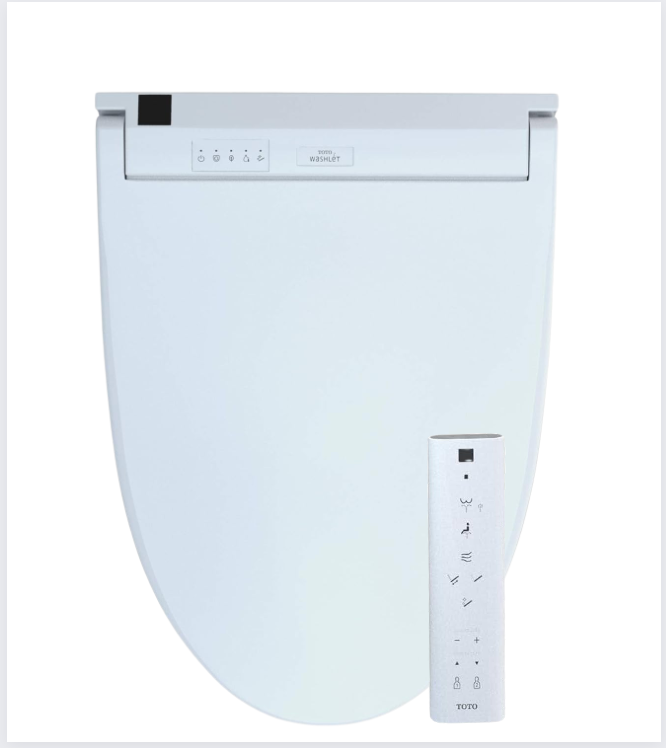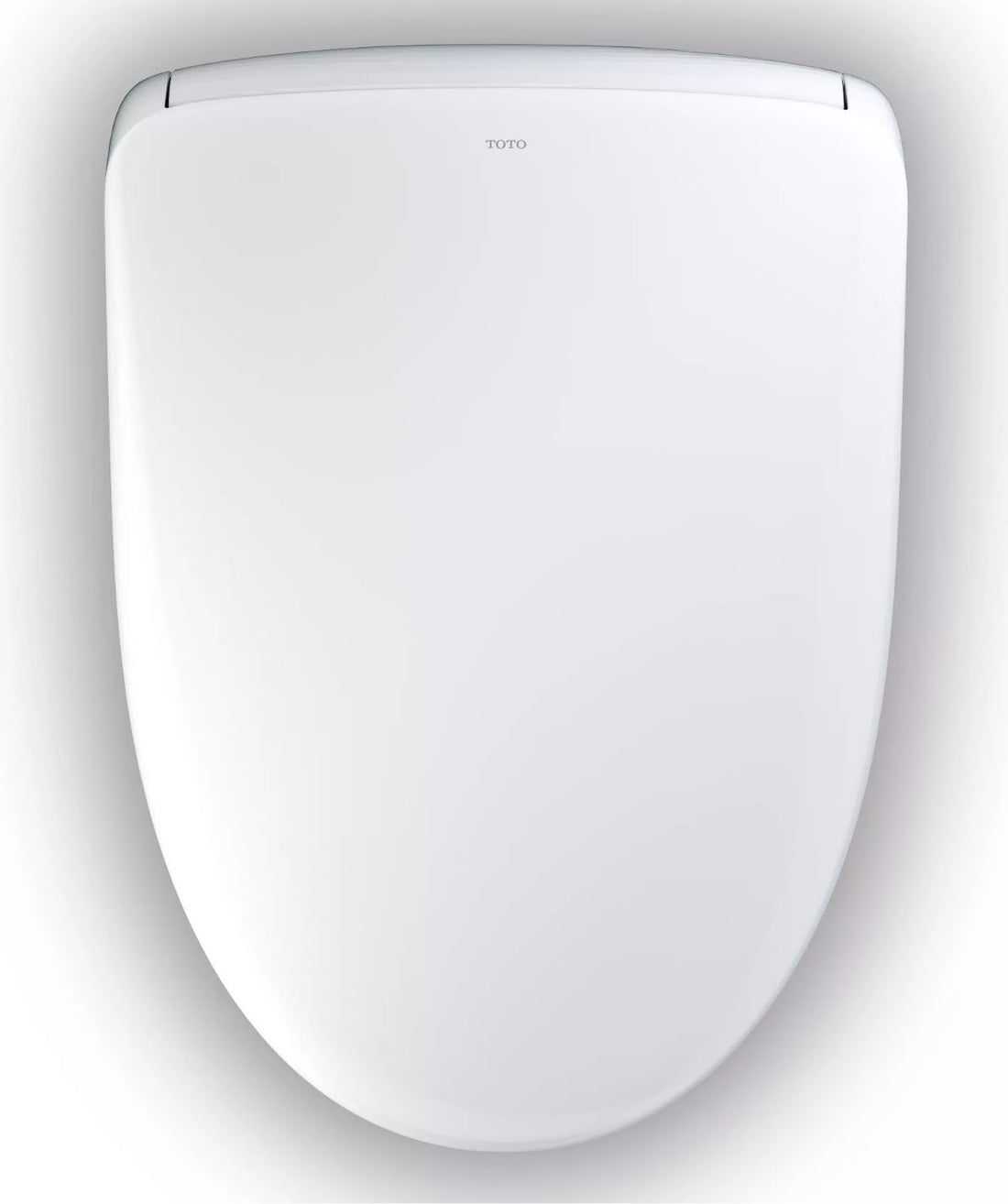If you're thinking about switching from toilet paper to a bidet, having warm water could seriously impact your decision. While cold water is fine for some, warm water bidets offer a superior level of luxury and comfort. Once you have the ability to control your water temperature, you'll never give it up.
How Does A Bidet Get Warm Water?
A warm water bidet can function in a few different ways, depending on what kind you have. The key differences are between electric and non-electric bidets.
Manual (Non-Electric) Bidets
Manual bidets require no electricity to function and typically cost less than electric bidets, but you will need to access a hot water line in order to have warm water washing with a non-electric bidets. Typically, the hot water line under the bathroom sink is your one option.
To do this, users will need to split the hot water supply between the sink and bidet using a "T" or "Y" valve. Accessibility to the hot water line will vary based on the layout of your bathroom, though it can be difficult to conceal a hot water supply hose on a manual bidet attachment.
Electric Bidets
Unlike a non-electric bidet, these systems can generate their own supply of hot water. A "T" fitting is used to split the incoming water between the toilet tank and bidet seat, where a water heater adjusts the temperature based on your preferences. Below are the different types of water heaters used in electric bidets.
Tankless (Instant) Water Heater
Instant water heaters, often called tankless heaters, are the most common heating method found in new seats on the market. Bidet seats with an instant water heater offer two major benefits: unlimited warm water and a more comfortable experience. With this type of system, the water is heated as it passes through a heating element, such as a coil, so your warm water supply is endless. These are more energy efficient than reservoir tank heaters (discussed below), however there can occasionally be a brief splash of cold water with tankless models when the bidet has been inactive or the source water is very cold.
Reservoir Tank Heater
Reservoir tank heating systems used to be the most common way to achieve warm water, and the method is still used in some lower-cost or older models of electric bidets. A reservoir tank water heater keeps a reservoir of water in the rear housing of the bidet seat unit that is kept heated for use. These offer a more limited amount of warm water, around 30 seconds on most models, however they don’t have any initial cold splash like the tankless models can sometimes have and they are often less expensive. Because the reservoir tank takes up more space, these bidet seats are also a bit bulkier in design.
Hybrid Water Heaters
Bidets with hybrid water heaters utilize elements of both the instant water heaters as well as the reservoir tank heaters. By using a much smaller reservoir system, the hybrid models are better at avoiding the initial cold splash sometimes found on tankless models. But they also use an instant heating element to keep the water warm for as long as you use it. Hybrid bidets take the benefits of reservoir and tankless water heaters and combine them in one system.
Using A Cold Water Bidet
While it may not be your first choice, cold water bidets offer simplicity and a great clean without breaking the bank. A cold water bidet can offer a good entry point for users who want a basic bidet to try before upgrading later on.
Is A Cold Water Bidet Uncomfortable?
Warm water bidets are preferred by most people, which should tell you that cold water can be a bit uncomfortable. For some, it's a simple adjustment to the temperature, but for others, cold water may ruin the experience. Most of the time, it's the surrounding temperature that makes cold water bidets uncomfortable because the body is already cool.
If you have not tried warm water bidets, it's strongly recommended that you do so before purchasing your own. Finding a friend, family member, or public restroom with a warm water bidet will help you experience the difference before making a final decision. Chances are that the water heater is worth it!
How Do I Install Warm Water Bidets?
Removing your toilet seat
To start your warm water bidet installation, locate the screw caps that mount your toilet seat to the bowl. Using the proper tool (typically a Phillips-head screwdriver) , unscrew the mounting bolts and remove the toilet seat.
Mounting the bidet seat
Next, install the bidet seat using the same holes. To do this, attach the rectangular guide rails into either side of the bidet mounting bracket and then place the bolts through the rails and the mounting holes. Secure the bracket in place with the nuts from underneath the mounting holes.
Once the mounting bracket is secured, you can then attach the bidet seat by sliding it straight back onto the bracket. Proper installation will be signaled by a distinct "click" from your seat. If you do not hear the click, loosen the brackets and press in again, tightening once it is snapped into place.
Connecting the water line
Behind the toilet, you should find a water shutoff valve, which you will need to turn to close before proceeding. Next, flush your toilet to drain the water tank. Detach the supply line from the bottom of your toilet tank and install the T-Connection (water splitter) directly to the bottom of the toilet tank. Re-attach your supply line to the bottom of the T-Connection.
With your bidet seat, you will receive a water supply hose. Attach this water hose to the T-connection while securing the other end to the seat's inlet (on the left side of the seat as you are facing the toilet). Once you have everything connected, turn on your water supply and check the newly installed seat for any leaks.
Powering warm water bidets
This should be the simplest part of the process, but if you do not have a nearby outlet, it becomes a lot more challenging. From an aesthetic and safety standpoint, you don't want an extension cord laying in the bathroom, so you will need an outlet within three feet of your electric bidet. If not, consider having a certified electrician install a power source behind the toilet to power your warm water bidet. Of course, this only applies with electric bidets.
For non-electric bidet seats and attachments, you will need to use an entirely different process. Non-electric bidets with a warm water option require a hot water source, which is typically the bathroom sink, as mentioned earlier. A splitter will be installed to share hot water between the sink and your bidet where it will be mixed with the separate cold water line.
What Are The Best Warm Water Bidets?
With all of the warm water bidets on the market today, which one is the best? Obviously, it's one with an instant water heater, but that only narrows down the selection by so much. The top-3 bidet toilet seat options in 2022 are:
TOTO S550e Washlet
The Washlet is energy-efficient, provides instant hot water, and packs in tons of extra features. In addition to the functional amenities, this bidet toilet seat offers a sleek design, multiple style options, and color choices to fit your bathroom perfectly. TOTO's Washlet goes beyond most user's expectations, but so does the price tag.
Brondell Swash 1400
The Swash 1400 is an excellent choice for those who want warm water, plenty of amenities, and a reasonable price. These bidet toilet seats include self-rinsing nozzles, unlimited warm water, and user presets, which come in handy for multi-resident living spaces. As one of the most popular bidets, the Swash has remained a strong competitor since 2017.
Bio Bidet BB 2000
The Bio Bidet BB 2000 is a force to be reckoned with in the world of bidet seats. Bio Bidet's most popular model combines all of the essentials, like adjustable water temperature, nozzle oscillation, warm air-dry, and more with the highest powered wash available in 2022. With the highest rate of water flow and a patented 3-in-1 nozzle that offers an "enema function", Bio Bidet is still winning with their BB 2000.





